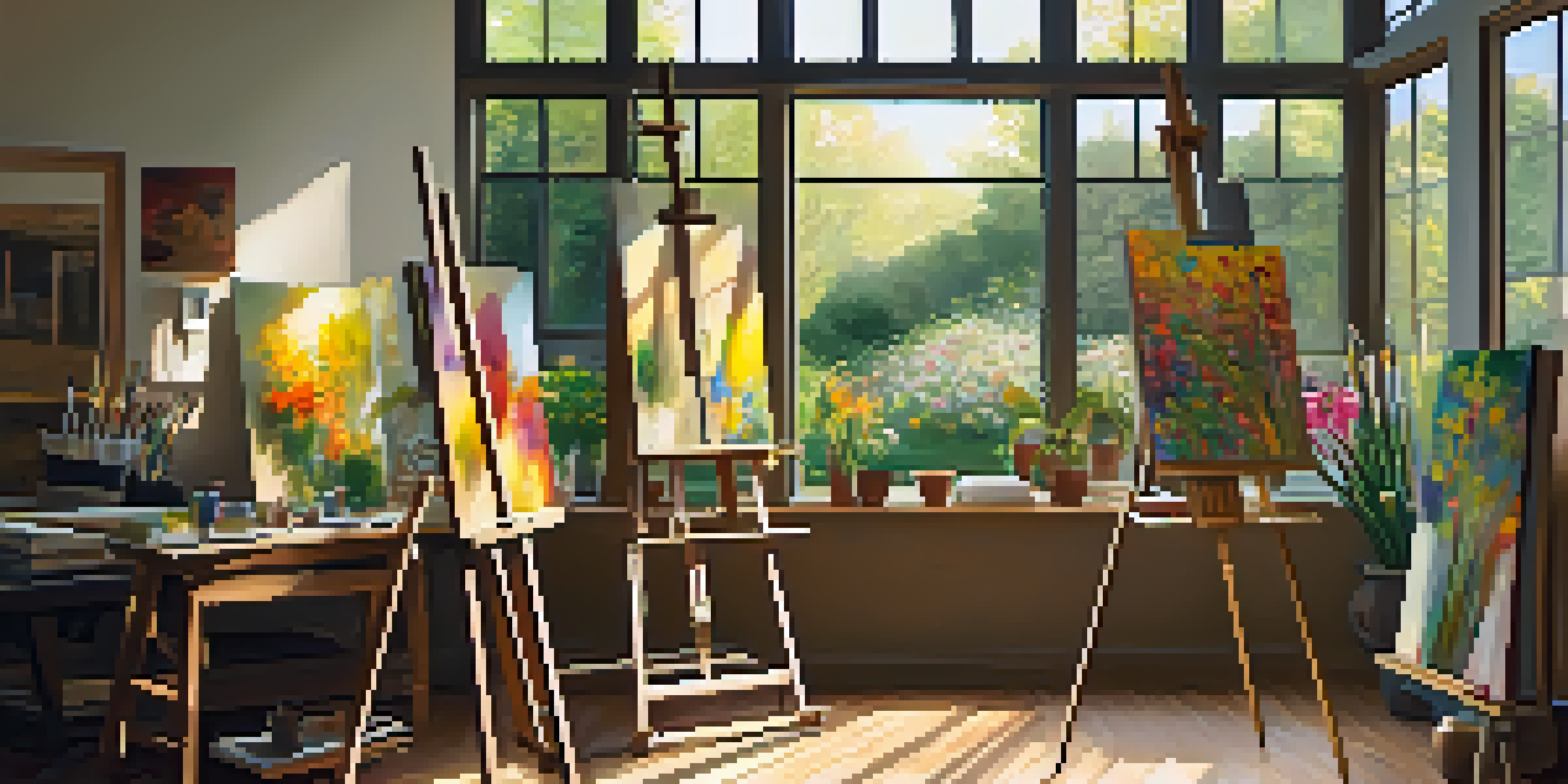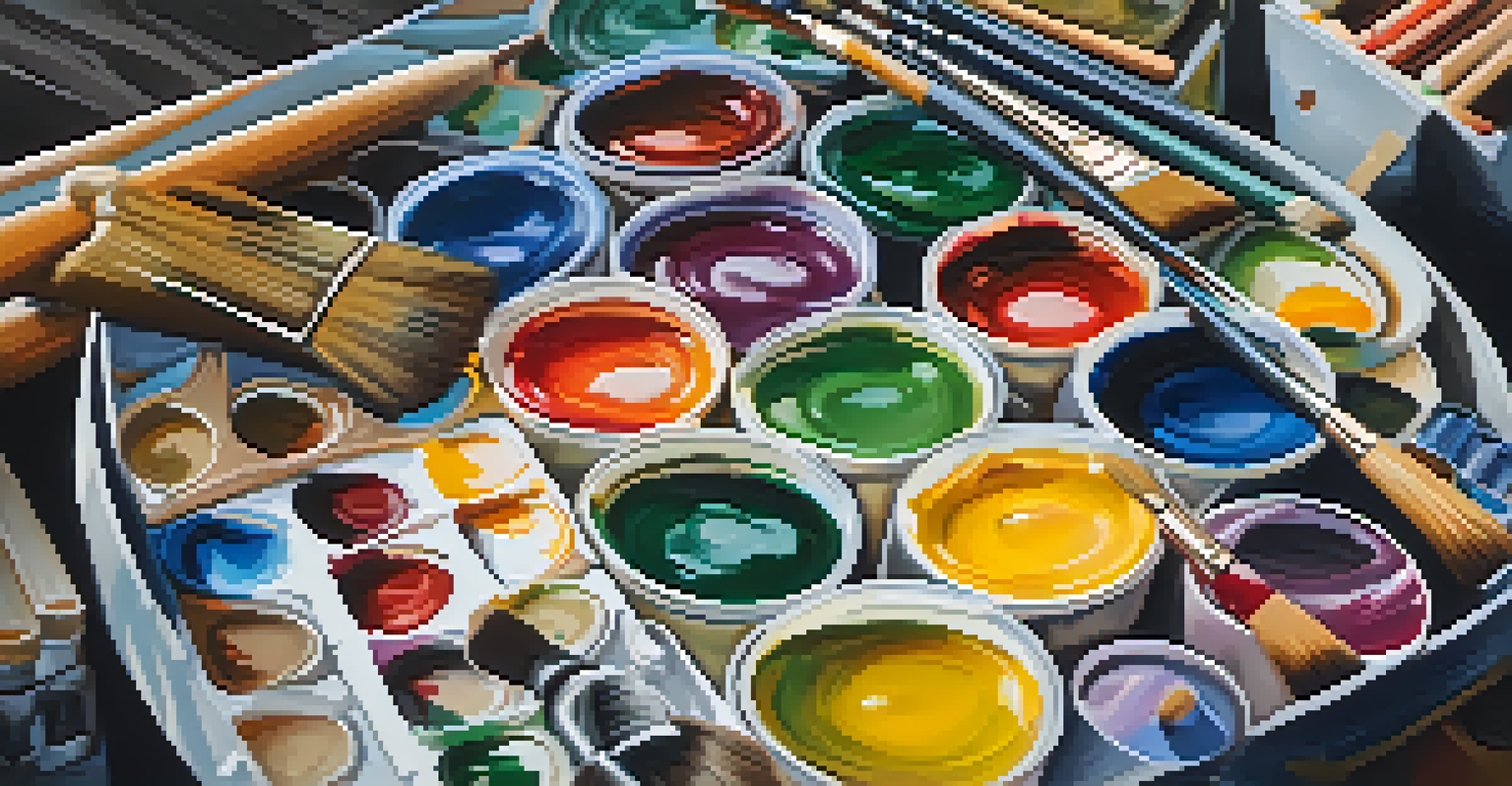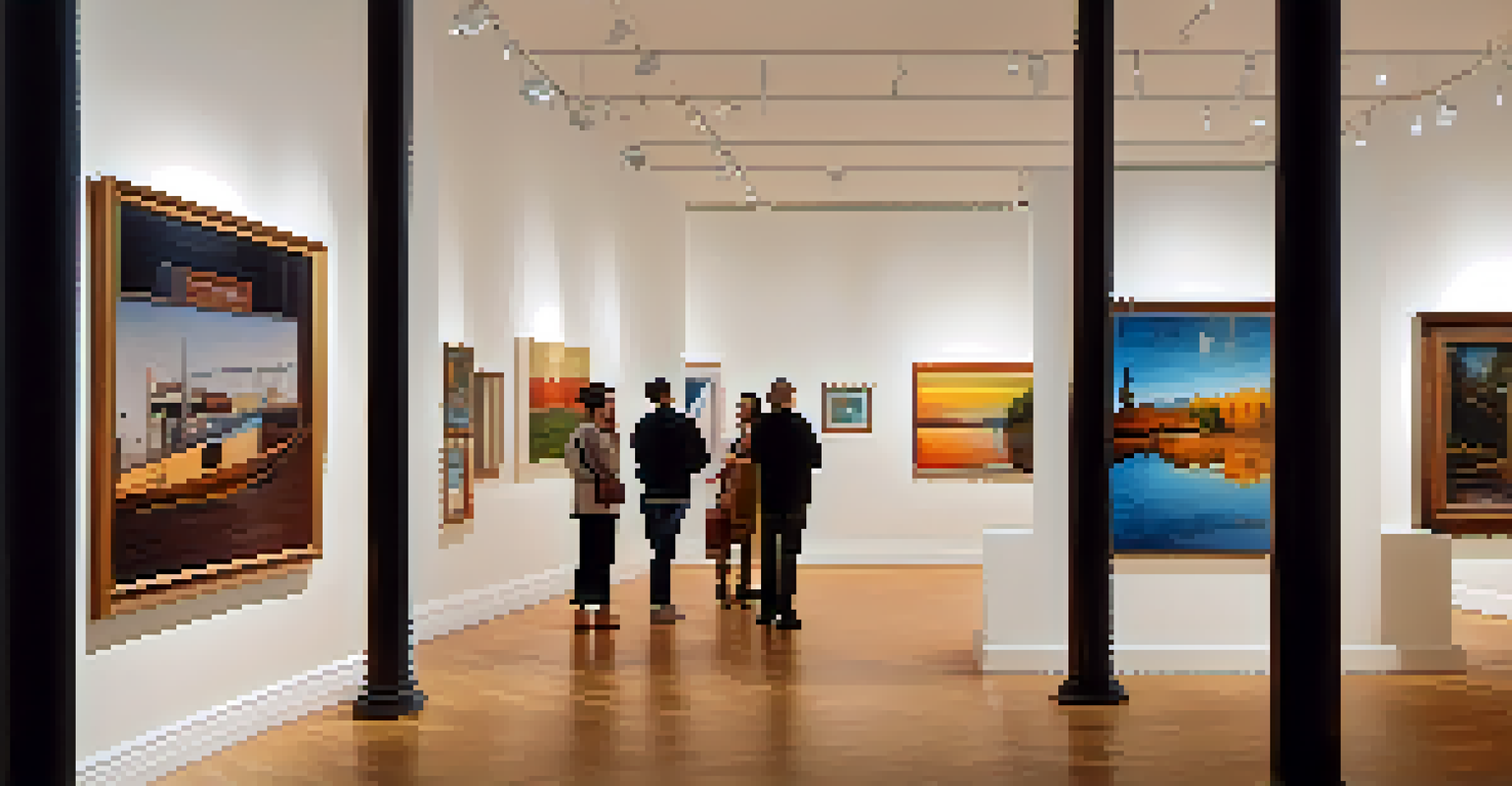Creating a Business Plan for Your Art Career

Understanding the Importance of a Business Plan
A business plan is your roadmap, guiding you through the complexities of your art career. Think of it as a blueprint for success, helping you visualize your goals and the steps needed to achieve them. Without a clear plan, it’s easy to drift away from your artistic aspirations and get lost in the chaos of daily tasks.
A goal without a plan is just a wish.
Moreover, a well-structured business plan can help you identify your target audience and market trends, ensuring that your creative efforts resonate with those who appreciate art. It’s not just about creating; it’s about creating with intention and purpose.
Finally, a comprehensive business plan can also be a vital tool when seeking funding or partnerships. Investors and collaborators want to see that you have a clear vision and a strategy to turn your passion into a sustainable career.
Defining Your Artistic Vision and Goals
Before diving into the numbers, it’s essential to clarify your artistic vision. What drives you as an artist? Are you focused on a particular medium, theme, or message? Defining your vision sets the foundation for everything else in your business plan.

Next, outline specific, measurable goals that align with your vision. For instance, you might aim to exhibit your work in three galleries within the next year or increase your social media following by a certain percentage. These goals will give you something to work toward and help you track your progress.
Importance of a Business Plan
A well-structured business plan serves as a roadmap for your artistic career, helping you identify goals and attract funding.
Don’t forget to revisit and revise your goals regularly. As you grow and evolve as an artist, your objectives might change, and it’s important to adapt your business plan accordingly.
Conducting Market Research for Your Art
Market research is crucial for understanding the landscape in which you’ll be operating. This means looking at who your potential buyers are and what they’re interested in. Are they collectors, interior designers, or casual art buyers? Knowing your audience can shape your marketing strategies.
Art is the most beautiful of all lies.
Additionally, investigate your competitors. What are other artists with similar styles or themes doing? This doesn’t mean you should copy them, but analyzing their success can provide insights into pricing, promotion strategies, and potential gaps in the market.
Finally, keep an eye on art trends and emerging markets. Art is constantly evolving, and being aware of shifts can help you position your work effectively and stay relevant in this dynamic field.
Creating Your Marketing Strategy
Once you understand your audience and market, it’s time to craft a marketing strategy that resonates. Consider both online and offline avenues. Social media platforms like Instagram and Pinterest are fantastic for showcasing your art, while local art fairs and exhibitions can help you connect with your community.
Don’t underestimate the power of storytelling in marketing. Sharing the inspiration behind your work can create a deeper connection with your audience. Whether it's through blog posts, videos, or Instagram stories, let your personality shine through.
Define Your Artistic Vision
Clarifying your artistic vision and setting measurable goals lays the foundation for a successful and focused business plan.
Lastly, remember to evaluate the effectiveness of your marketing efforts regularly. Analyze which strategies are working and which need tweaking. This adaptability will help you maintain a strong presence in the art world.
Setting a Budget and Financial Projections
A crucial aspect of your business plan is setting a budget. Consider all potential expenses, including art supplies, marketing, and any studio space you might need. Having a clear financial overview can prevent unexpected costs from derailing your plans.
Alongside your budget, create financial projections for the next few years. This involves estimating your income based on your pricing strategy and anticipated sales. Realistic projections can guide your spending and help you make informed decisions.
Finally, don’t forget to plan for taxes and other financial obligations. Keeping your finances in check will allow you to focus on your art without the stress of monetary surprises.
Building Your Network and Collaboration Opportunities
Networking is a game changer in the art world. Building relationships with fellow artists, gallery owners, and potential buyers can open doors you never knew existed. Attend art events, workshops, and online forums to meet people who share your passion.
Collaborations can also be beneficial. Partnering with other artists or businesses can expand your reach and introduce your work to new audiences. Consider hosting joint exhibitions or creating limited-edition pieces together.
Network and Collaborate Effectively
Building relationships within the art community and pursuing collaborations can significantly enhance your reach and opportunities.
Remember, networking is not just about what you can gain; it’s also about what you can give. Supporting other artists and sharing opportunities can create a positive ripple effect in the community.
Evaluating and Adjusting Your Business Plan
A business plan is a living document that should evolve as you do. Schedule regular check-ins to assess your progress toward your goals. Are you on track? What challenges have you faced? Reflecting on these questions can provide valuable insights.
Don’t be afraid to make adjustments. If you find certain strategies aren’t working or your artistic vision has shifted, update your plan accordingly. Flexibility is key to navigating the ever-changing landscape of the art world.

Lastly, celebrate your successes, no matter how small. Each achievement brings you closer to your vision and reminds you of the passion that fuels your art career.